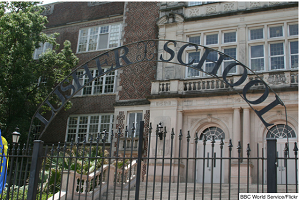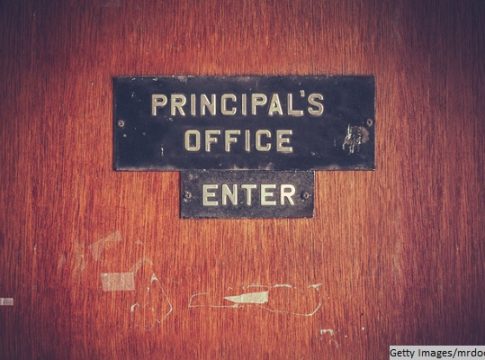The tenth anniversary of Hurricane Katrina provided a much-needed occasion to reflect on the progress of the city’s schools since the floodwaters receded. One of the most important questions is whether New Orleans can stand as a national model for those seeking to transform the education—and therefore the life outcomes—of low-income children of color. I’m not completely sold yet.
In the wake of the storm, New Orleans’s education system was rebuilt virtually from scratch. More than one hundred low-performing schools were placed under the jurisdiction of Louisiana’s Recovery School District (RSD), which was created in 2003 to take over and reverse the fortunes of chronically disappointing public schools throughout the state. At a stroke, the city’s public school system was functionally transformed; today it’s a virtually all-charter “replacement district.” More than 90 percent of New Orleans public school students attend a charter school, with the RSD overseeing 70 percent of the city’s overall K–12 student population.
When reform-friendly commenters and cheerleading journalists write about the NOLA transformation, it’s become de rigueur to offer a standard qualifier–words to the effect of, “We still have a long way to go, but…” In this formulation, poor overall reading and math proficiency based on standardized test scores is a mere speed bump before long and laudatory discussions of the remarkable growth demonstrated by the city’s charter schools and students since Katrina.
And to be clear, the growth really is remarkable. A study led by Tulane’s Douglas N. Harris found that the New Orleans reform efforts resulted in student learning gains of 0.4 standard deviations. “To put this 0.4 standard deviation in context, the black-white achievement gap is about the size of one standard deviation,” wrote Neerav Kingsland, the former CEO of New Schools for New Orleans and a key player in the city’s education revival. “Meaning in the years after Hurricane Katrina, New Orleans students and educators achieved an effect that is almost half the size of the black-white gap in this country,” he added.
Low-income students in New Orleans are without question getting a better education than they would have had Katrina never occurred. But before we anoint New Orleans as the beau ideal for urban education reform, let me pose this question: If you’re a low-income person of color who wants a great public education for your child, is New Orleans where you want to be right now? The fairest answer I can think to offer is this: Maybe someday, but not yet. Cities with smaller but higher-performing charter sectors, such as Boston or New York or even Washington, D.C.,would be my first choice.
Macke Raymond, the director of Stanford University’s Center for Research on Education Outcomes (CREDO), agrees. “First, pick a state with strong NAEP averages. Second, find a community where the average achievement is at or above the state average,” she told me in an interview. “Third, find a charter, if you can, that bests the community average.” Using this formula, New Orleans wouldn’t clear the first hurdle to become the go-to city for our theoretical low-SES family, since Louisiana is one of the poorest-performing states in the country on NAEP. And students in the Recovery School District, while gaining rapidly, still trail Louisiana’s statewide averages in math and reading.
The CREDO study released earlier this year showed that, in the aggregate, urban charter schools provide “significantly higher levels of annual growth in both math and reading” when compared to traditional public schools in the same regions. The effect was particularly notable for low-income students of color. The study noted that urban areas like Boston, Detroit, Indianapolis, Memphis, and Nashville “appear to provide their students with strong enough annual growth in both math and reading that continuous enrollment in an average charter school can erase the typical deficit seen among students in their region.”
To be clear, New Orleans charters’ results were among the strongest in the CREDO study. But they’re still not achieving at the levels that will ensure their students success in college and an on-ramp into the middle class. An oft-repeated statistic in recent weeks is that prior to Katrina, 64 percent of public school students were attending “failing” schools; today it’s in the single-digits. Bravo. But to be blunt, there are acres of daylight between “not failing” and “excellent.”
Likewise, it is seldom asked whether New Orleans’s gains are a function of the structural changes put in place since Katrina, or whether a massive and non-replicable infusion of talent make it closer to a one-time event. This is a question asked by Harris himself, who described the effects he’s measured in New Orleans as “the ceiling of what’s possible with this kind of approach.”
“I don’t think you’d see the same effects in other places because the conditions here were distinctive. You have a lot of people from around the country wanting to come here to help in a way that you’re not going to have in Detroit, for example. It’s the center of school reform. So you have a lot of very talented people who want to be part of school reform who are going to come to New Orleans. If you want to build a tech company, you go to Palo Alto. If you want to be involved in school reform, you come to New Orleans, and that’s not going to be true in other places. There’s only one Silicon Valley,” he noted in an interview with Matt Barnum of the Seventy Four.
Comparisons between small-scale, selective chartering in cities that are starved for high-quality options (read: nearly every major city in America) and the efforts in a city like New Orleans— which is attempting to scale up to an entire system—are difficult to make and, moreover, fundamentally unfair. But given the limits of resources, especially talent, it is not unfair to suggest we are a long way from having the capacity to replicate in a satisfying and purposeful way what has been accomplished in Louisiana. And again, what has been accomplished remains modest in terms of student achievement. The strategic question for the charter sector might be which horse to back in the short- to medium-term: selective chartering or a district-wide replacement strategy? My money is still on the former.
Frankly, I don’t see a lot of upside for the charter sector in allowing its reach to exceed its grasp. In the main, Americans are broadly supportive of charter schools. An excess of ambition will do the sector no favors.
New Orleans is doing very well. But let’s think long and hard before trying to graft its approach onto other cities.
– Robert Pondiscio
This first appeared on Flypaper.




